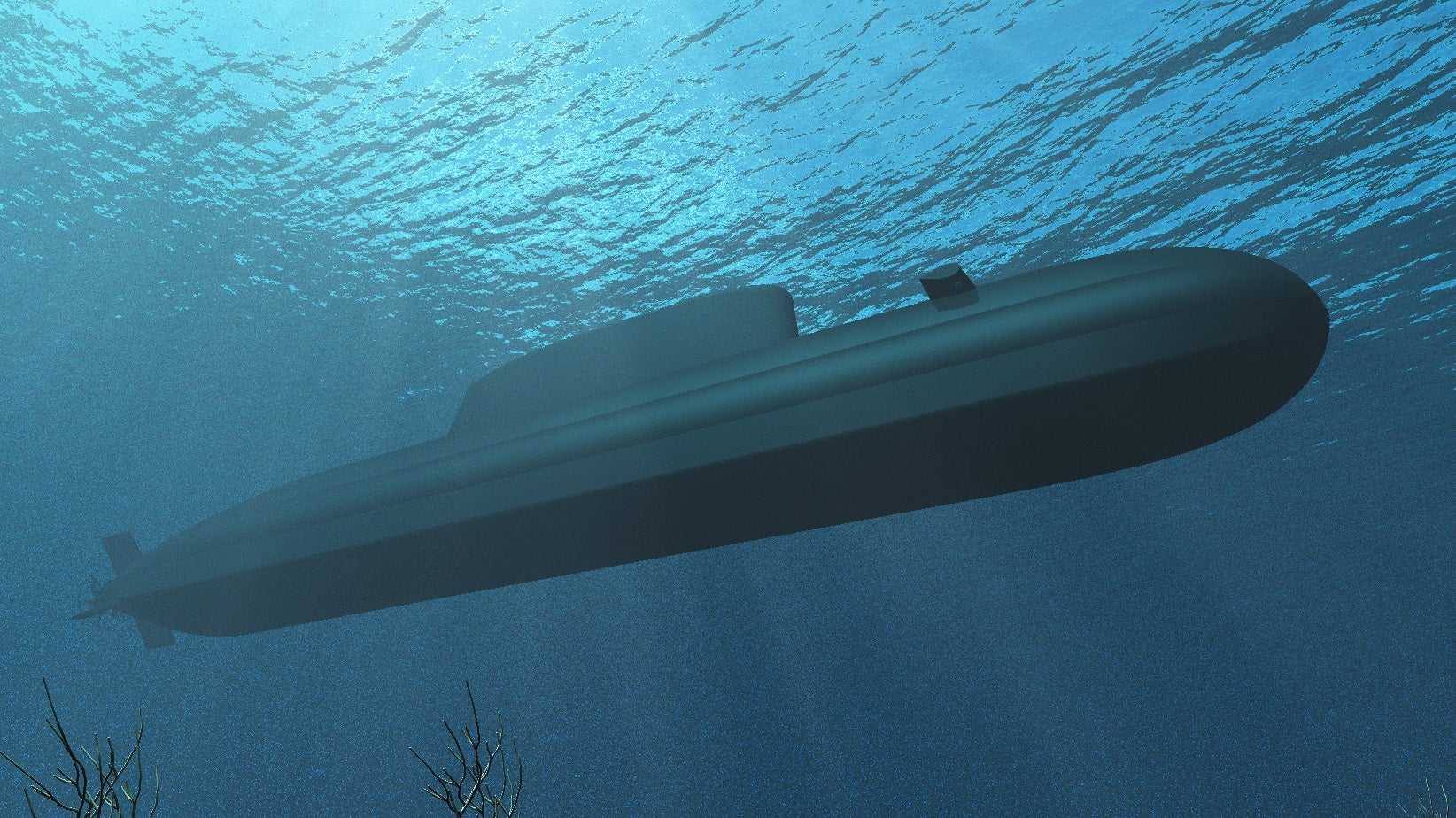The Israeli Navy’s next-generation submarine, the Dakar class, to be built in Germany, will be entirely different from the Dolphin class boats the service currently operates. Most obviously, it appears to feature a much-enlarged sail, revealed in a computer-generated artwork released today by ThyssenKrupp Marine Systems (TKMS), the prime contractor. There is also growing speculation that the submarines will have provision for a vertical launch system (VLS). This feature is still extremely rare on conventionally powered submarines and would be a new development for the Israeli Navy, providing significant additional strike capacity.
An agreement was reached today between TKMS and the Israeli Ministry of Defense on the sale of three Dakar class submarines. While Israel has long planned to acquire new submarines from Germany, framework conditions for the deal were formally agreed by both parties “after extensive negotiations,” according to TKMS.
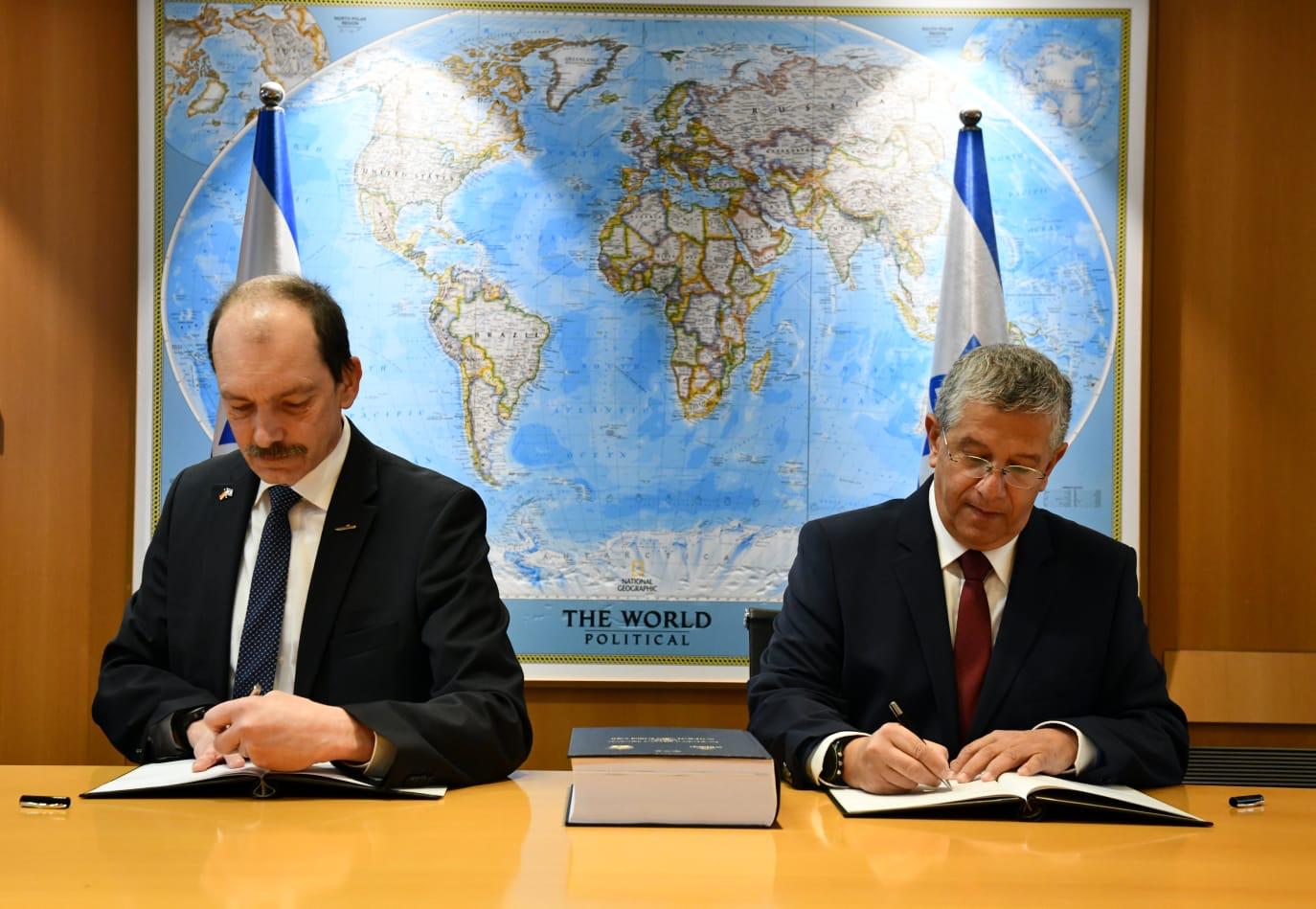
The three Dakar class submarines will replace the Israeli Navy’s first batch of three Dolphin class submarines, also built in Germany, which were commissioned between 1999 and 2000. The new tranche of submarines will be built in Kiel, in northern Germany, which also manufactured a second group of six Dolphins. Those latter boats are known as the Dolphin II class and they differ from their predecessors in featuring air-independent propulsion (AIP), a concept you can read more about here.
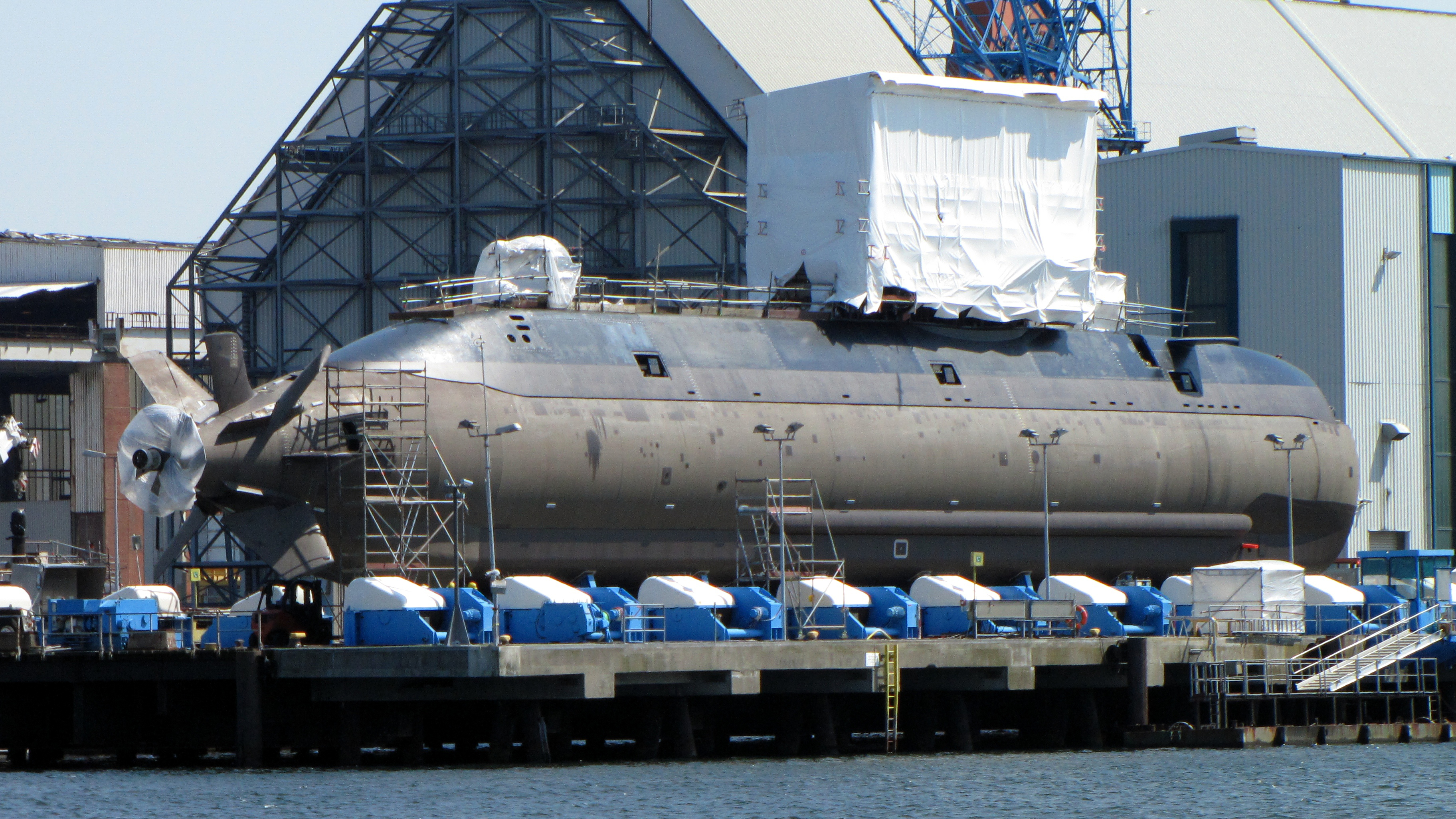
“We, as ThyssenKrupp Marine Systems and Germans, are honored and proud to continue the long cooperation — spanning decades — with the Israeli Ministry of Defense and the Israeli Navy,” said Dr. Rolf Wirtz, CEO of TKMS, in a statement. “The new class of submarine will provide Israel with the most advanced capabilities, based on an innovative, cutting-edge technology.”
The agreement further cements the close relationship between TKMS and the Israeli Navy, with the company having also completed four Sa’ar 6 class corvettes for the service. These powerful warships, which you can read more about here, are the country’s largest surface combatants.
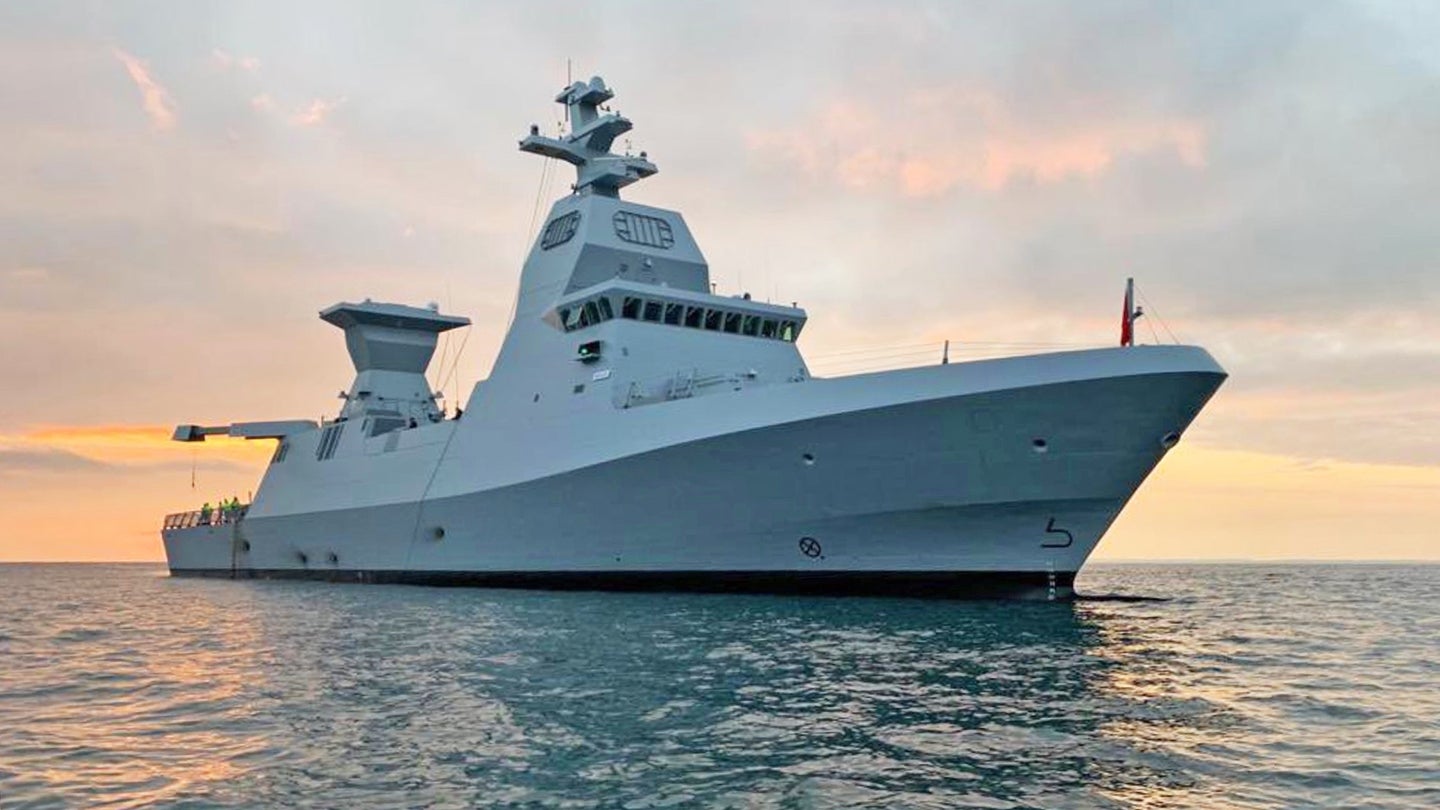
TKMS describes the Dakar class as “a completely new design, which is to be specifically engineered to fulfill the operational requirements of the Israeli Navy.” In the official rendering released today, the arrangement of the cruciform rudders of the new submarine appear broadly similar to those found on the Dolphin class and the concept art of the future Type 212CD design that will be produced for both Germany and Norway. However, the same art shows that Dakar’s hullform has notable differences from those of these other designs and, most notably, features a significantly longer sail.
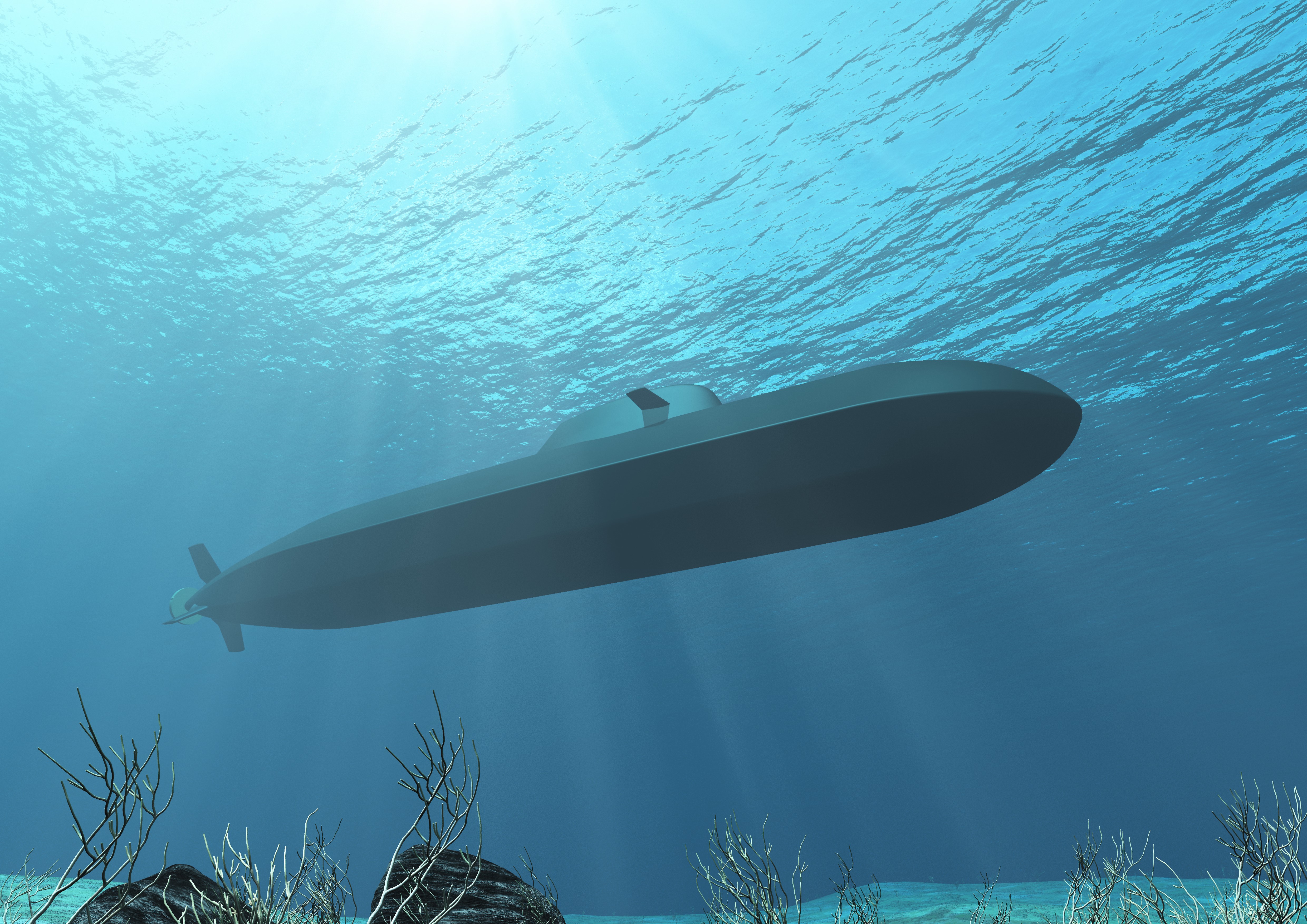
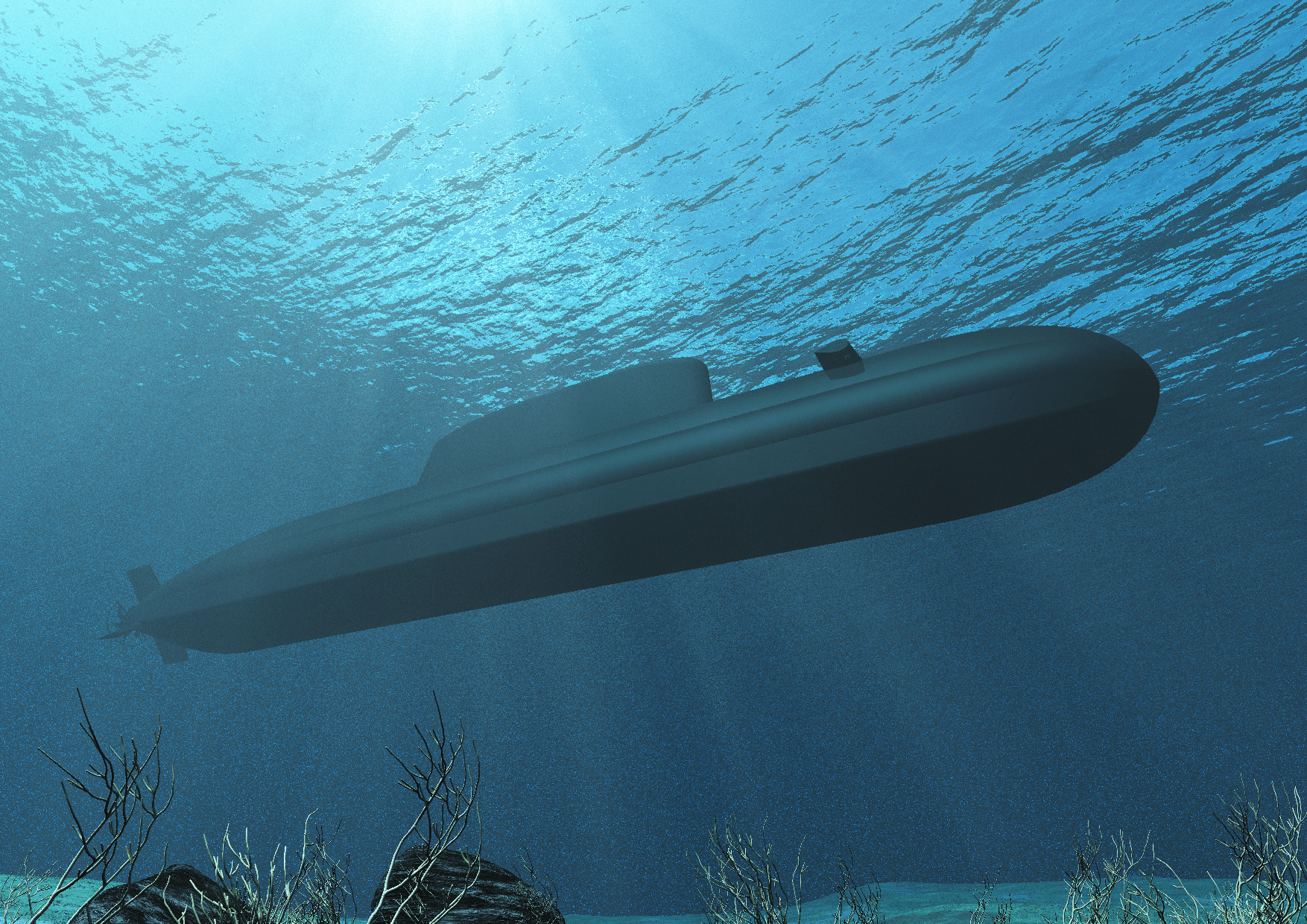
The reason for the extra sail length is unclear and it should be pointed out that this artwork may be provisional, with the final design possibly looking different. Nevertheless, the fact that the sail has been illustrated in this way would seem to suggest that it’s a major feature that is currently intended for the class.
Having more space inside the sail could be very useful for the Israeli Navy’s concept of submarine operations, in which special operations missions have long played a prominent role. An enlarged sail would be one way of gaining more mission space for special operations teams and their equipment, perhaps with an integrated wet and dry compartment for deploying the teams and their gear.

The same kind of internal arrangement could be suitable for deploying unmanned underwater vehicles (UUVs) or unmanned aerial vehicles, which are fast becoming a more familiar feature of submarine operations. Additional internal space would also be useful for expanded command and control facilities, or for supporting various types of intelligence, surveillance, and reconnaissance (ISR) capabilities.
Another traditional reason for a large sail, especially on a smaller submarine, is to house bigger missiles. The first generation of Soviet-designed ballistic missile submarines, for example, carried their missiles in the sail. That could be the plan for the Dakar class and it wouldn’t be the first conventionally powered submarine to gain a submarine-launched ballistic missile (SLBM) capability. South Korea’s Dosan Ahn Changho class attack submarines each have six SLBM tubes, albeit fitted in the hull rather than the sail.

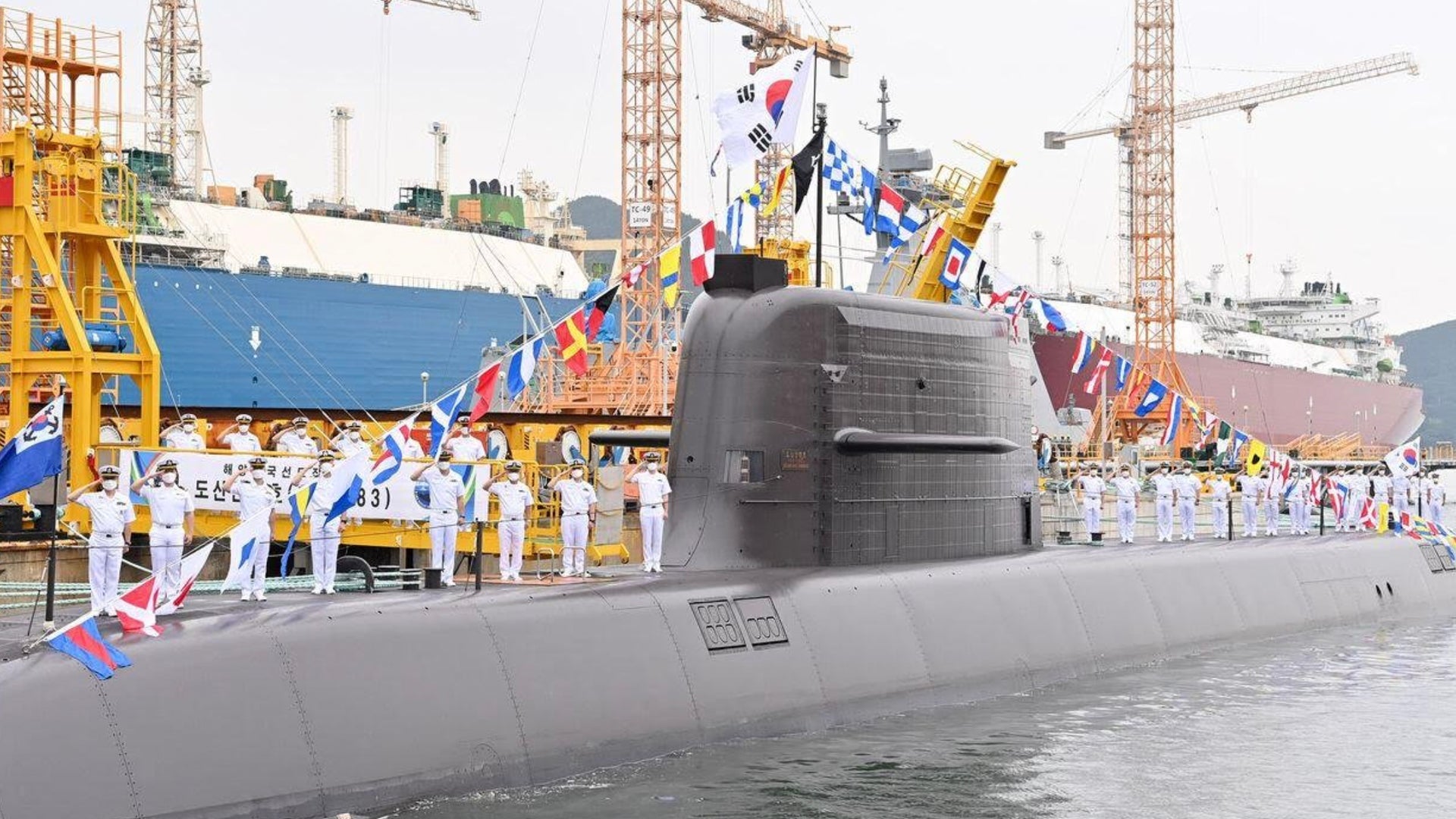
However, while South Korea does not possess nuclear weapons and its SLBMs are currently conventionally armed, Israel does have a nuclear capability, although it maintains a strict policy of secrecy in this regard.
Using their torpedo tubes, at least some of the current Dolphin class submarines are believed to be able to launch Popeye Turbo cruise missiles adapted to carry nuclear warheads. The Dakar class is likely to have a similar capability, although there is currently no sign that Israel is working on a new SLBM, whether nuclear or conventionally armed. That doesn’t mean that such a program does not exist though.
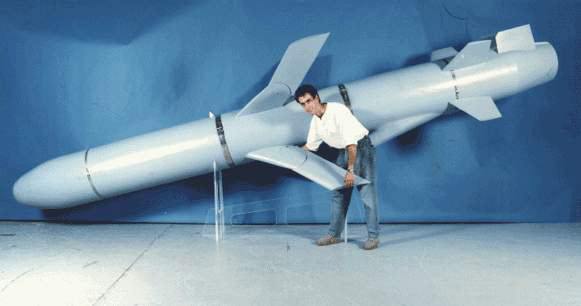
Should the enlarged sail be intended to contain missiles, it would accommodate vertical launch system (VLS) cells. These could be used to launch additional cruise missiles, for extra overall capacity, while also freeing up the torpedo tubes for their primary weapons. New types of missiles might also be better accommodated by VLS cells, perhaps even including hypersonic weapons that would likely be too large for the torpedo tubes. Above all else, significantly extending the length and upgrading the Popeye Turbo missile would provide Israel with the ability to strike targets over longer ranges, which would enhance the country’s second-strike deterrent by a significant degree. These missiles may be too long to be stored and deployed vertically from the hull, but a VLS that extended through the sail would be able to accommodate their length. A mix of these updated weapons now, and possibly a ballistic missile later, is also a possibility.
Whatever weapons the Dakars might carry, it seems very likely that Israel is seeking a more robust second-strike capability in light of Iranian developments in particular and continuing fears that Tehran might suddenly decide to pursue a nuclear weapon.
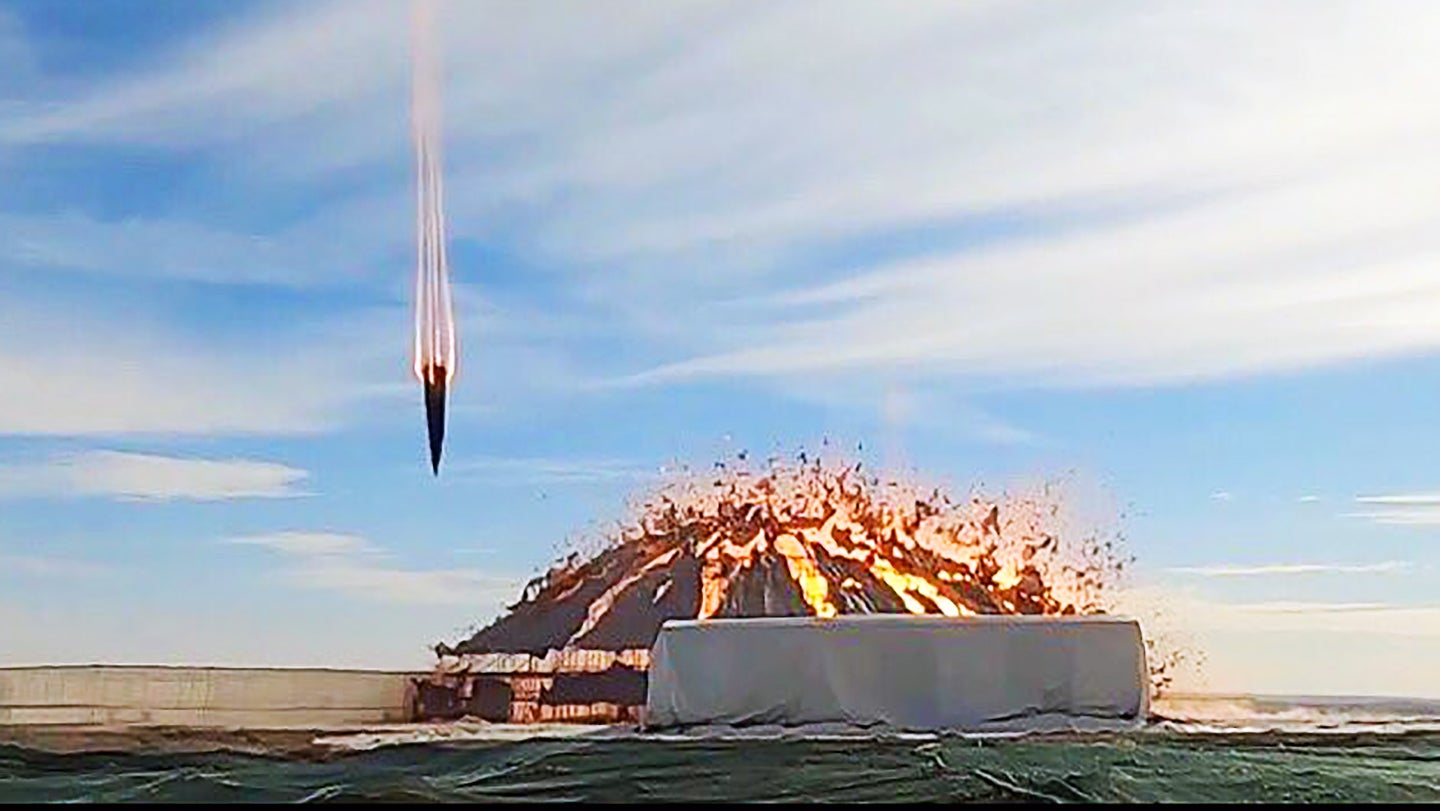
There is also the possibility that the roles and missions for the Dakar class might be viewed somewhat differently from older Israeli Navy submarines in general, due to the country’s growing interest in being able to project naval power further beyond its shores. This is also reflected in the Sa’ar 6 class, which offers a new capability to project power out into the Mediterranean and maybe even beyond.
Interestingly, only hours before the latest TKMS concept artwork became available, H. I. Sutton, an author and an expert on submarine warfare, pointed to rumors that the Dakar class could eventually emerge with VLS cells.
The last of the Dolphin IIs, INS Drakon is now undergoing sea trials off the coast of northern Germany. “It is possible that the submarine may have been increased in length compared to earlier boats of the same class,” Sutton writes, raising the possibility that it might feature some of the changes planned for the Dakar class. If this were the case, INS Drakon could be intended as a testbed to try out future technologies for the new class.
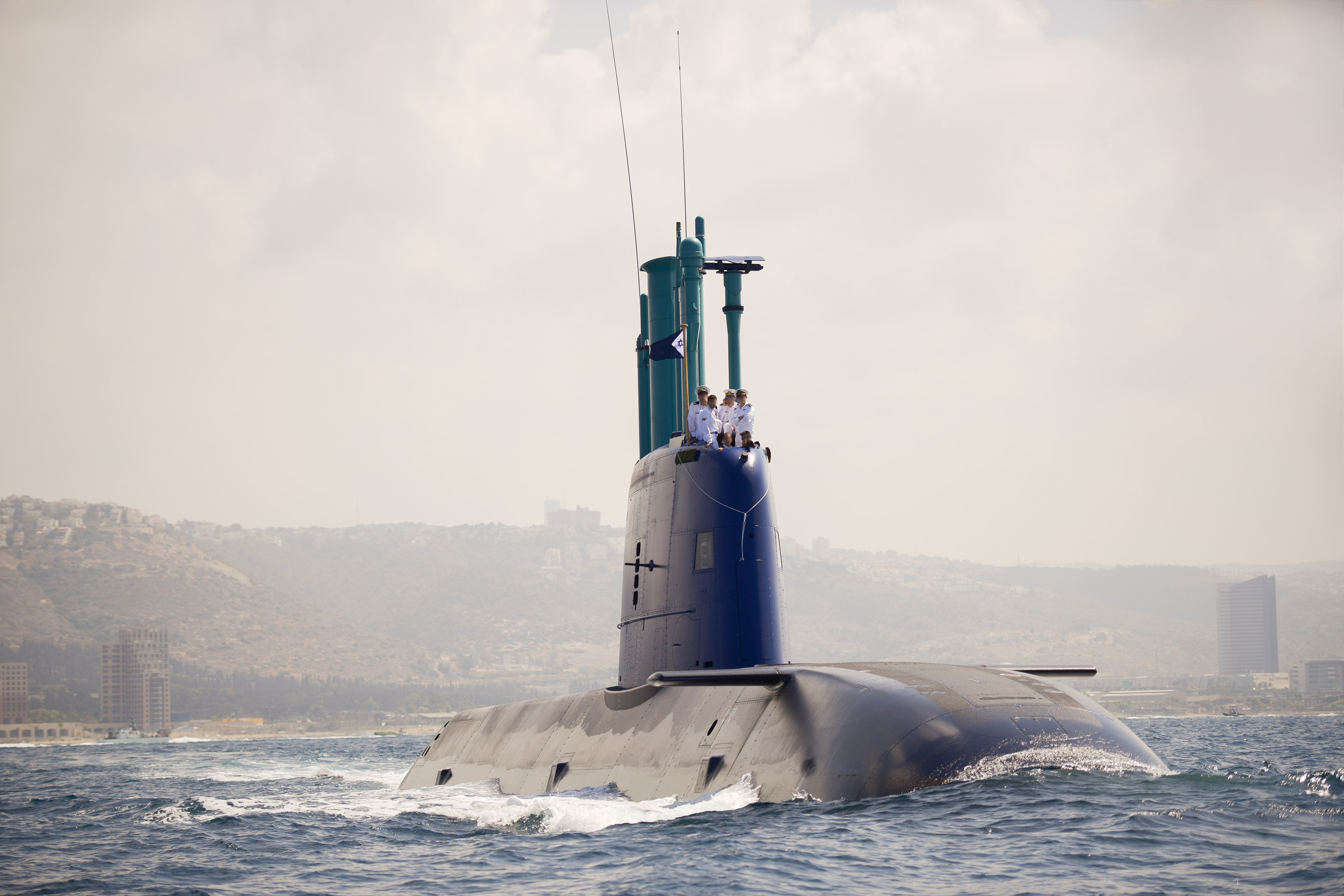
It’s not clear if INS Drakon might be equipped with VLS cells as well, let alone whether those cells would be located in the hull or the sail. However, a suggestion that INS Drakon is larger than the previous Dolphin IIs might be found in recent reports that the total cost of those three submarines has doubled, from $2.05 billion in 2017 to $4.1 billion today. Part of the explanation for that considerable price hike could be larger physical dimensions for INS Drakon, and perhaps other advanced features, such as VLS cells.
Overall, it seems likely that the Dakar class will indeed have some kind of VLS capability, both as a means of increasing overall magazine capacity, as well as introducing the possibility to carry new and more advanced missiles that would supersede the Popeye Turbo in both conventional and nuclear land-attack roles, as well as for anti-ship strike.
At this stage, however, the VLS rumors remain just that. For now, it’s unclear whether INS Drakon is larger than its predecessors, whether it or the Dakar class will feature new missiles in new VLS cells, or even what the exact final design of Israel’s next-generation submarines will look like.
The secrecy that surrounds Israeli submarine programs, and operations will surely endure, but the Dakar class is slowly emerging as a fascinating and potentially extremely important part of the Israeli military machine.
Contact the author: thomas@thedrive.com
